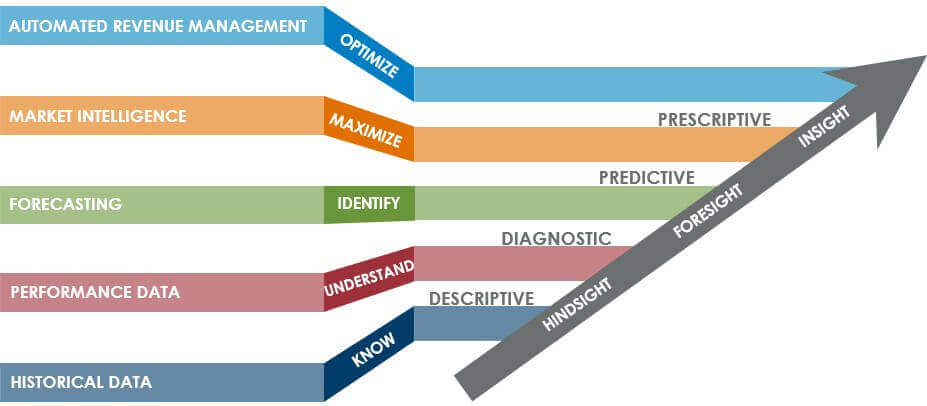
Every compelling story – a thrilling book, a coworker’s wild weekend recount, an upcoming blockbuster movie – contains some very familiar elements. Commonly referred to as the five w’s of storytelling, every strong narrative provides answers to the common inquisitive questions of who, what, where, when and why.
NB: This is an article from IDeaS
The story your data tells about your hotel’s strategic revenue performance is no different. Comprised of four distinct types of analytics – and providing three levels of data clarity – technology helps hotels take broad (and often diverse) data details and strategically weave them into the page-turning chapters of an even bigger revenue story.

- Descriptive analytics and diagnostic analytics provide revenue hindsight by evaluating historical performance data to identify what happened, when it happened and why it happened. Large volumes of historical data are used in descriptive analytics to help hotels make informed decisions about the future based on what already happened. Common examples of descriptive data include reservation booking data used in standard hotel reporting, such as business-on-the-books and pick-up reports. Diagnostic data aggregates historical data to help you understand why an outcome occurred, and helps benchmark hotel performance against market competition. Common diagnostic data examples are BI and STR market performance reporting
- Predictive analytics provide revenue foresight by delivering forecasts that establish where your hotel can execute future pricing and inventory strategies. Most of today’s revenue management solutions provide this with occupancy and revenue forecasts at the total hotel level. These informed forecasts help you anticipate what’s going to happen next, where your revenue opportunities are, and where you can drive effective pricing and inventory controls
- Prescriptive analytics go even one step further to give hotels revenue insight. They leverage hotel data and forward-looking market intelligence data to produce automated decisions that help identify who your hotel’s ideal guests are and how your hotel can achieve optimal revenue performance. The powerful combination of industry data and revenue strategy controls deliver highly accurate pricing and inventory control decisions by room type and multiple lengths of stay. They also give you deeper levels of insight into market positioning, channel profitability and guest personas for more insightful marketing campaigns and promotions that can be monitored in real-time to maximize direct business and profitability. Common examples of prescriptive analytics are advanced demand forecasts at detailed levels and automated pricing decisions
These four types of analytics play an integral role in providing crystal clear clarity into your hotel’s overarching data story. And when all of these analytical layers of data are incorporated into an automated tool, your revenue strategy can create and execute the most analytically optimal decisions for richer guest experiences and stronger profitability.




